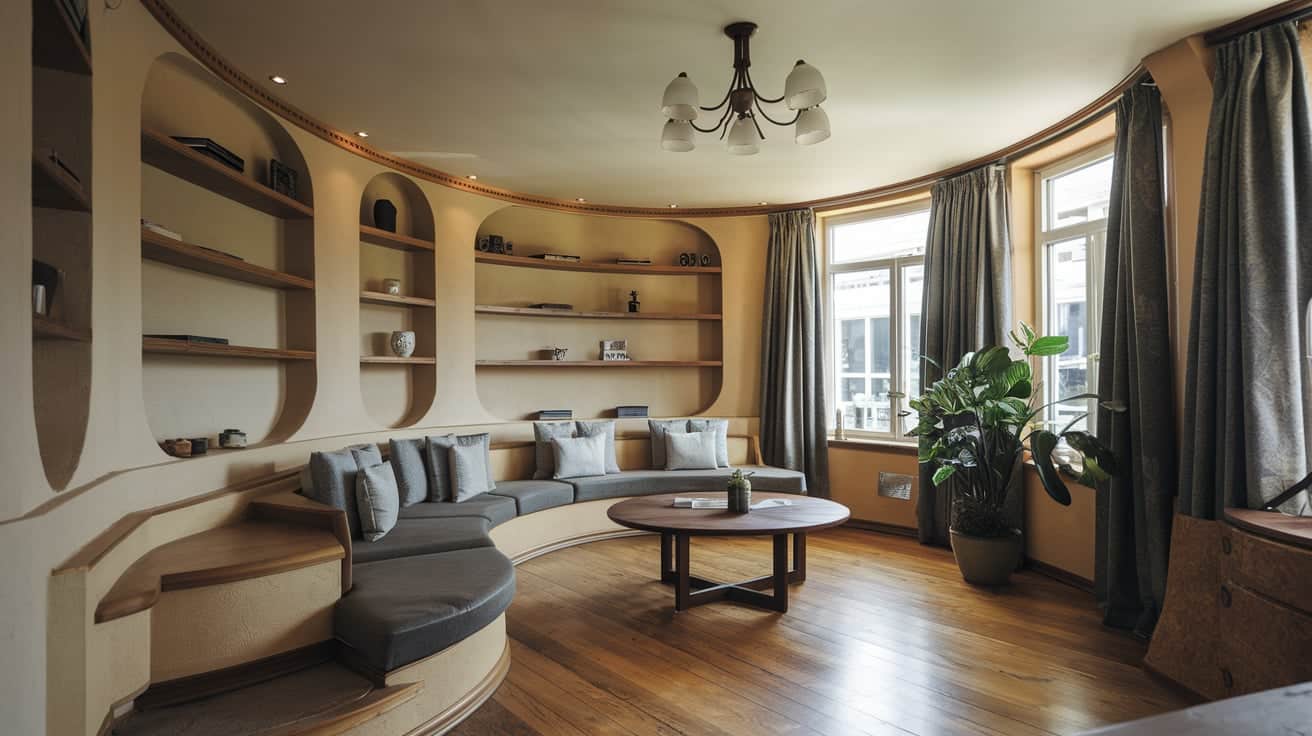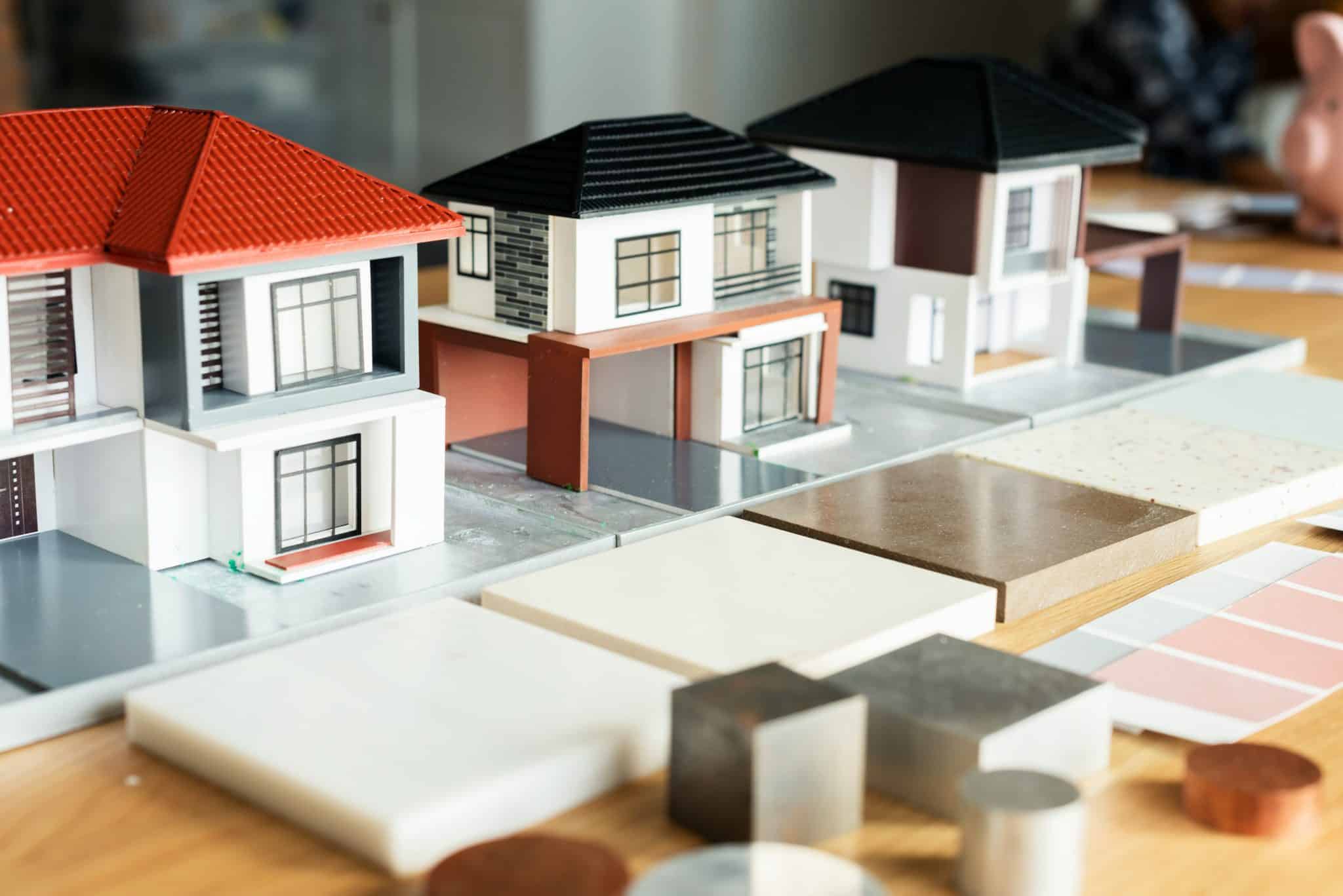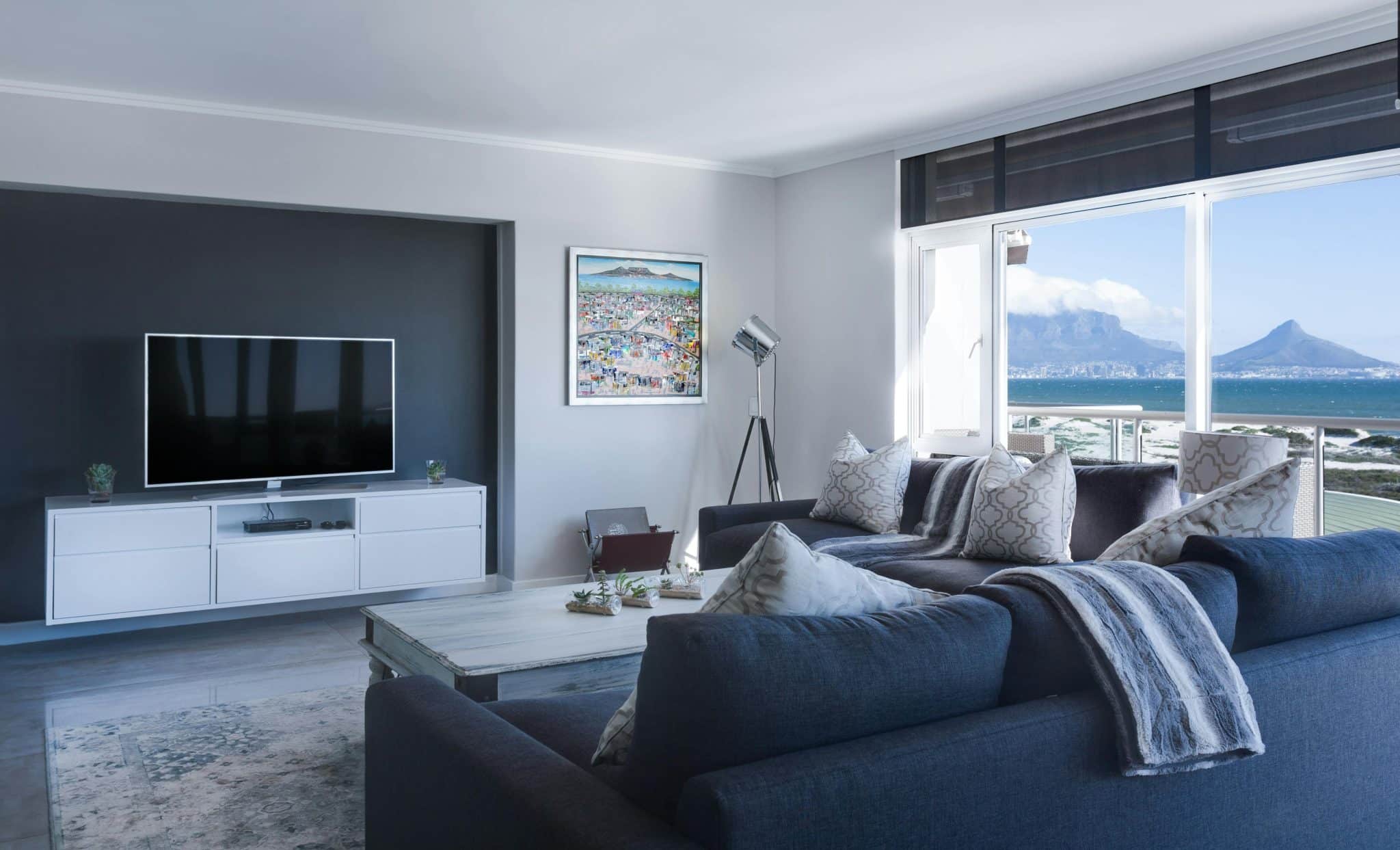You know that feeling when you walk into a room and it just feels right? Shapes play a key role in creating that perfect feel. They form the basic building blocks of every space.
Creating a well-designed room means understanding how shapes work together. From square tables to round mirrors, each shape brings its own mood and purpose to your space.
This guide will show you how to use different shapes—geometric, organic, abstract, linear, curved, symmetrical, and asymmetrical—to create the perfect mood in your home. You’ll learn how shapes affect both feeling and function and get practical tips for mixing them effectively.
Ready to change your spaces with better shape selection? Let’s look at how the right shapes can make your rooms both beautiful and practical.
Understanding the Role of Shape in Interior Design
Shapes are the basic building blocks of interior design. They are the outlines and forms of items that fill a space. Each shape adds its feel to a room and helps set the mood. Square and sharp shapes can make a room feel firm and stable.
Round shapes tend to create a softer, more relaxed mood. The right mix of shapes can make a space feel just right for its purpose. Interior design uses many kinds of shapes. Squares, circles, and triangles are some basic types.
Some shapes come from nature with free-flowing lines, while others are made up of simple, clean lines. Each type works best in different settings. When you look around a room, notice how shapes affect how you feel. A room with too many of the same shapes can feel dull.
A good mix keeps things fresh and helps the space work well for the people using it.
Different Shapes in Interior Design and How to Use Them
Shapes play a crucial role in interior design, influencing the flow, mood, and functionality of a space. From geometric to organic forms, understanding the different types of shapes can help you create a harmonious and visually engaging environment.
1. Geometric Shapes
Geometric shapes have clear, precise forms with evenly spaced lines and angles. Squares, circles, triangles, and rectangles are common geometric shapes used in home design. These shapes add order and structure to spaces.
Use geometric shapes to create a sense of calm and order. They work well in modern, clean spaces. Mix them with other shape types to keep rooms from feeling too stiff.
Using geometric shapes effectively: Place them in key spots to draw attention.
2. Organic Shapes
Organic shapes flow freely with uneven lines, copying forms found in nature. Think of leaf outlines, pebble forms, or the soft bends of hills and waves. They often have no set pattern.
These shapes help make spaces feel more laid-back and friendly. When you add organic forms to a room, it can feel less formal and more welcoming. They work well with natural materials.
Creating comfort with organic shapes: Add them through pillows and small items.
3. Abstract Shapes
Abstract shapes come from artistic views that don’t copy real things exactly. They might be based on real forms but changed in new, creative ways. These shapes add a fresh, modern touch.
When adding abstract shapes to your home, balance them with simpler forms. Too many bold abstract pieces can make a space feel busy. A few well-placed items work best.
Add interest with abstract shapes: Use them as talking points in your space.
4. Curved Shapes
Curved shapes have smooth, rounded edges that feel soft and gentle. They bring a sense of ease to spaces and help reduce stress. These forms think less strict than sharp angles.
Add curves through round tables, soft-edged sofas, or oval mirrors. They work well in rooms where you want to relax, like bedrooms and living areas. Curves also help with flow in busy spaces.
Softening spaces with curves: Round edges make rooms feel more open and gentle.
5. Symmetrical vs. Asymmetrical Shapes
Symmetrical shapes, like a square cut in half, have equal parts on both sides. They create a sense of order and peace. Most formal spaces use this balanced look.
Asymmetrical shapes feature uneven sides, creating more visual interest. They make spaces feel more lively and fresh. You can mix both types to create rooms that feel both calm and alive.
Balancing your space: Mix even and uneven shapes for the best feel.
Shape and Color: A Symbiotic Relationship
Colors and shapes work as partners in room design. Even when the same size, red squares feel different from blue circles. Each combo affects how we feel in a space. Some pairings work better together. Soft blues with curved shapes create calm spots.
Bold reds with sharp angles add energy. Light greens with organic shapes bring a nature feel indoors. Too many bright colors with complex shapes can make a room feel busy. Pick either bold colors or strong shapes, not both. This keeps spaces feeling good to be in.
For shapes that stand out, try neutral backgrounds. A black geometric lamp pops against a cream wall, letting you show off cool shapes without visual strain.
Function matters in shape-color choices. Light colors on round furniture make small rooms feel bigger, while dark colors on square pieces create cozy zones. Think about what each room needs to do.
Shape Mistakes to Avoid for a Well-Designed Interior
| Mistake | Description |
|---|---|
| Overusing sharp angles or chaotic shapes | It can make a room feel harsh or uncomfortable. |
| Too many contrasting shapes | Creates a disjointed and unbalanced look. |
| Not considering the function of the space. | Shapes must match the purpose of the room (e.g., angular pieces in a cozy space). |
| Ignoring proportions and balance | Disproportionate shapes can disrupt the flow of the room. |
| Excessive repetition of the same shape | Results in a monotonous and uninteresting space. |
| Poor placement of shapes disrupts the flow | Shapes that block movement or disrupt traffic can hinder room functionality. |
| Neglecting natural features | Shapes should complement natural lighting and the architecture of the space. |
Proven Tips for Perfectly Using Shape in Interior Design
- Mixing shapes creatively: Blend squares, circles, and free-form shapes to create a balanced look that keeps the eye moving.
- Working with proportion: Choose shapes that complement your room size to avoid items that look too big or too small.
- Balancing hard and soft shapes: For visual harmony, add round pillows to angular couches or place flowing vases on straight shelves.
- Focus on function over form: Select shapes that serve the room’s purpose, like round tables for better group talks.
- Use shapes to guide the eye: Place a unique shape where you want people to look first when they enter the room.
- Consistency with variation: Repeat similar shapes in different spots while adding some variety to keep things fresh.
- Layering shapes: Put different shapes in front of and behind each other to create depth and make the room feel full.
Conclusion
Shapes matter more than many people think when designing their homes. They form the basis of how we see and feel in any space. Good shape choices can make your rooms both look good and work well.
To sum up the main points: mix different shapes for interest, match shapes to your room size, and balance hard lines with soft curves. Keep in mind that shapes affect mood—circles calm us while squares provide stability.
When working with shapes, always consider the room’s purpose. A living room needs different shapes than a home office. The right shapes help rooms work better for the people using them.
What will you try first in your own space? Maybe add some round items to a square room or bring in a few straight lines to balance curved furniture? Small changes in shape can make big differences in how a room feels.
Remember that the best spaces use shapes to create both beauty and purpose. Your rooms should not only look good but also feel right for how you live.
Frequently Asked Questions
1. What Are the Best Shapes for Small Apartments?
Round furniture and oval tables work best in small spaces as they allow easier movement without sharp corners.
2. How do I Choose the Right Shape for My Coffee Table?
Match it to your seating arrangement – round for sectionals, square for L-shaped sofas, and rectangular for long couches.
3. Can I Mix Wood Shapes with Metal Shapes in the Same Room?
Yes, mixing materials with different shapes adds depth and keeps the room looking fresh and balanced.
4. How Do Patterns and Shapes Work Together in Interior Design?
To maintain visual balance in your room, use simple patterns with complex shapes and bold patterns with basic shapes.













